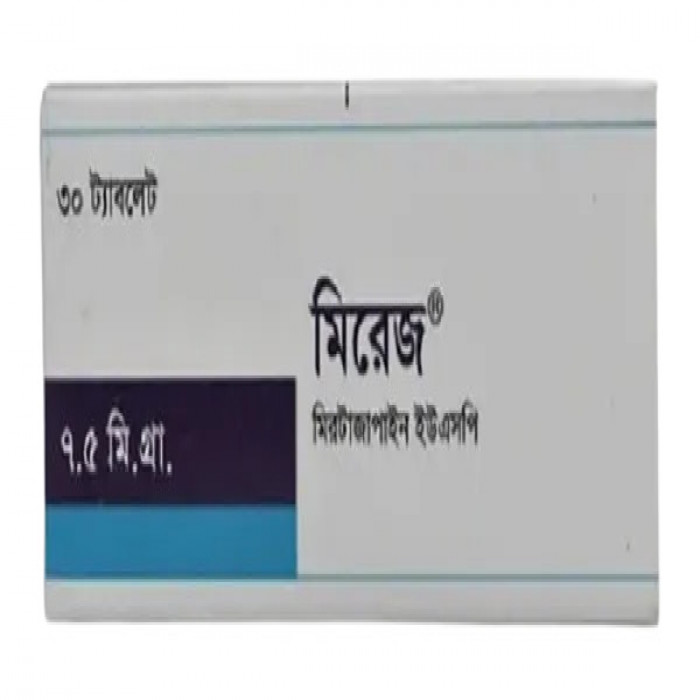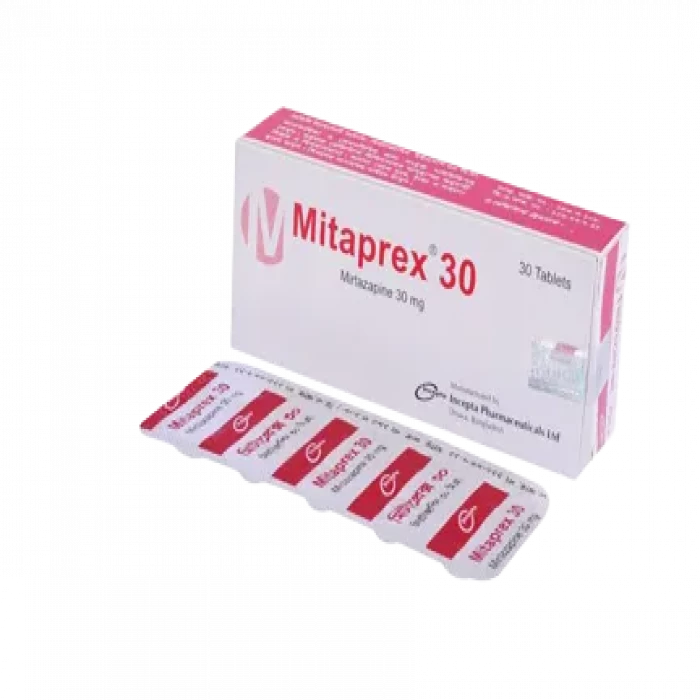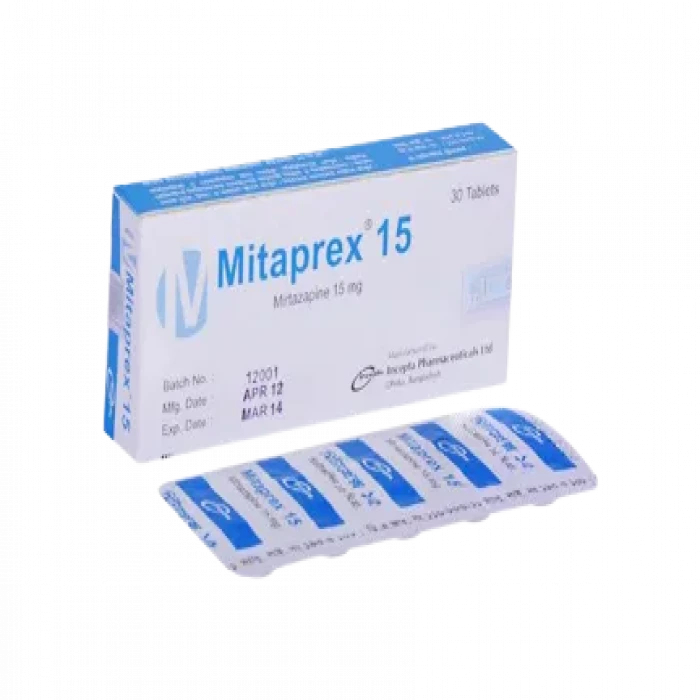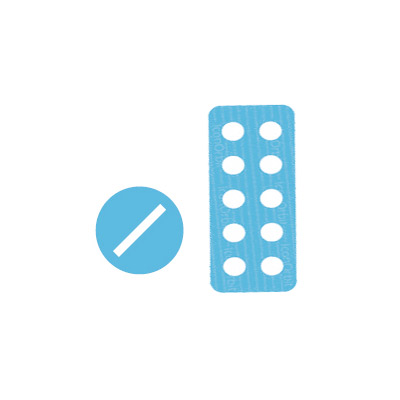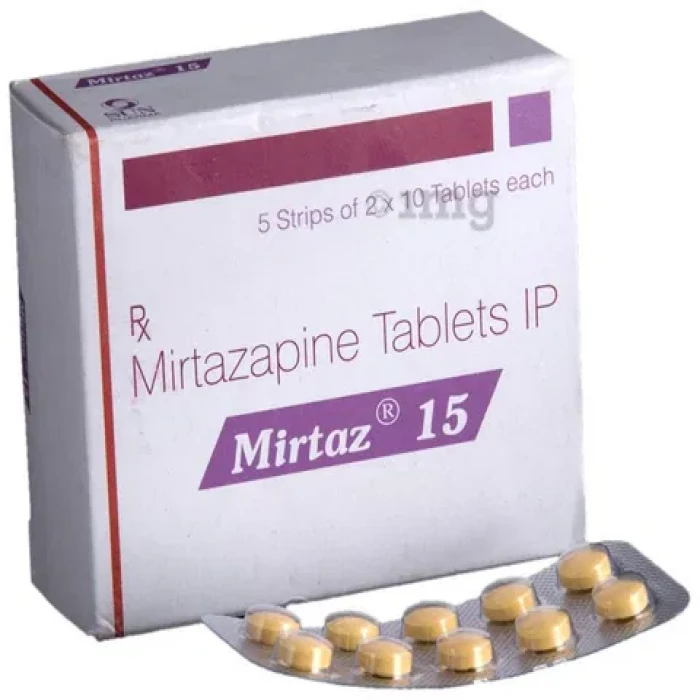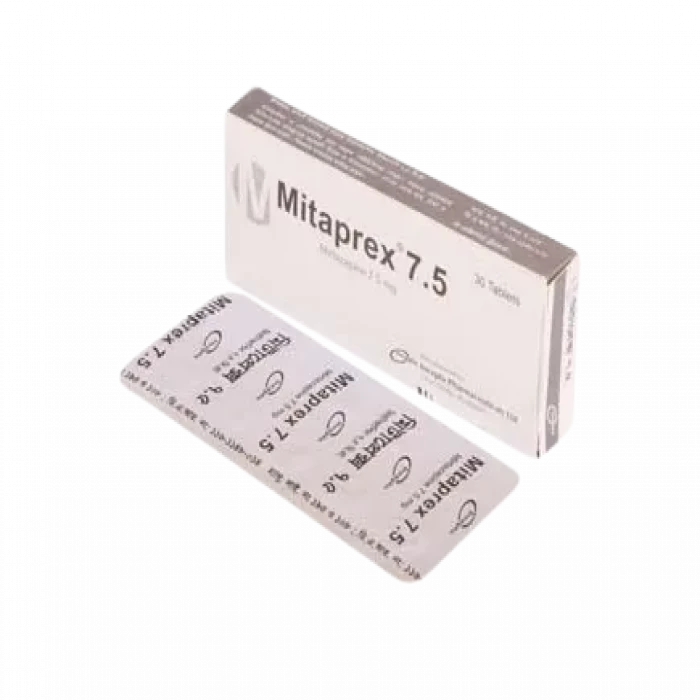
✔ 100% Authentic Product
👁️ Currently Viewing 918
Mitaprex 7.5mg Tablet 1 Strip
Mirtazapine is used for the treatment of major depressive disorder (MDD).

100% Genuine Products, Guaranteed
Safe & Secure Payments, Always
Fast, Secure & Efficient Delivery
Proper Packaging
 Cash on Delivery - All over Bangladesh
Cash on Delivery - All over Bangladesh Regular Delivery - 12-24 Hours, Dhaka City*
Regular Delivery - 12-24 Hours, Dhaka City* Regular Delivery - 24-48 Hours, All Over Bangladesh*
Regular Delivery - 24-48 Hours, All Over Bangladesh* ফ্রি ডেলিভারি! - ১৪৯৯ টাকা+ অর্ডারে ঢাকা
শহরে ।
ফ্রি ডেলিভারি! - ১৪৯৯ টাকা+ অর্ডারে ঢাকা
শহরে ।
✅ Description:
- The exact mechanism of Mirtazapine in treating depression is unknown.
- It enhances central noradrenergic and serotonergic activity by antagonizing central α2-adrenergic receptors.
- Acts as an antagonist of 5-HT2 and 5-HT3 receptors, increasing serotonin activity.
- Strong histamine (H1) antagonist, which contributes to its sedative effects.
- Moderate α1-adrenergic and muscarinic receptor antagonists lead to potential side effects like orthostatic hypotension.
Pharmacokinetics:
- Rapidly absorbed after oral administration, reaching peak plasma levels within 2 hours.
- Plasma protein binding: 85%.
- Half-life: 20-40 hours (26 hours in males, 37 hours in females), allowing for once-daily dosing.
- Metabolized primarily by demethylation and oxidation, followed by conjugation.
- Eliminated through urine and feces within four days.
✔️ Dosage & Administration
Adults:
- Starting dose: 15 mg/day, preferably in the evening or before sleep.
- Effective dose range: 15-45 mg/day.
- Dose adjustments: Increase to 30 mg or a maximum of 45 mg/day if needed.
- To allow a full therapeutic response, dose changes should be made at intervals of at least 1-2 weeks.
Children:
- Not recommended for use in children.
Missed Dose:
- Take as soon as remembered unless it's close to the next dose.
- Do not double the dose if a dose is missed.
✔️ Side Effects
- Dizziness
- Drowsiness
- Dry mouth
- Increased appetite
- Weight gain
✔️ Drug Interactions
- Avoid combining with Monoamine Oxidase Inhibitors (MAOIs) and other serotonergic drugs, such as:
- Tryptophan, triptans, linezolid, serotonin reuptake inhibitors (SSRIs), venlafaxine, lithium, tramadol, or St. John's wort.
- May interfere with Carbamazepine, Phenytoin, or Cimetidine metabolism.
- Avoid alcohol and Diazepam due to increased sedative effects.
✔️ Contraindications
- Hypersensitivity to Mirtazapine or its components.
- Do not use with MAOIs (must wait at least 14 days before starting or stopping Mirtazapine).
✔️ Pregnancy & Lactation
- Pregnancy Category C: Use only if benefits outweigh risks.
- Inform the doctor if pregnant, planning pregnancy, or breastfeeding.
✔️ Precautions & Warnings
- Monitor for worsening depression, suicidal thoughts, anxiety, panic attacks, or unusual behavior changes—especially during the early treatment phase or dose adjustments.
- Risk of agranulocytosis (a severe drop in white blood cells).
- May impair motor skills and judgment due to sedative effects.
- Can cause elevated liver enzymes (ALT/SGPT ≥3 times the normal range).
✔️ Storage Conditions
- Store below 30°C, away from light and moisture.
- Keep out of reach of children.
⚠️Disclaimer:
At ePharma, we’re committed to providing accurate and accessible health information. However, all content is intended for informational purposes only and should not replace medical advice from a qualified physician. Please consult your healthcare provider for personalized guidance. We aim to support, not substitute, the doctor-patient relationship.




